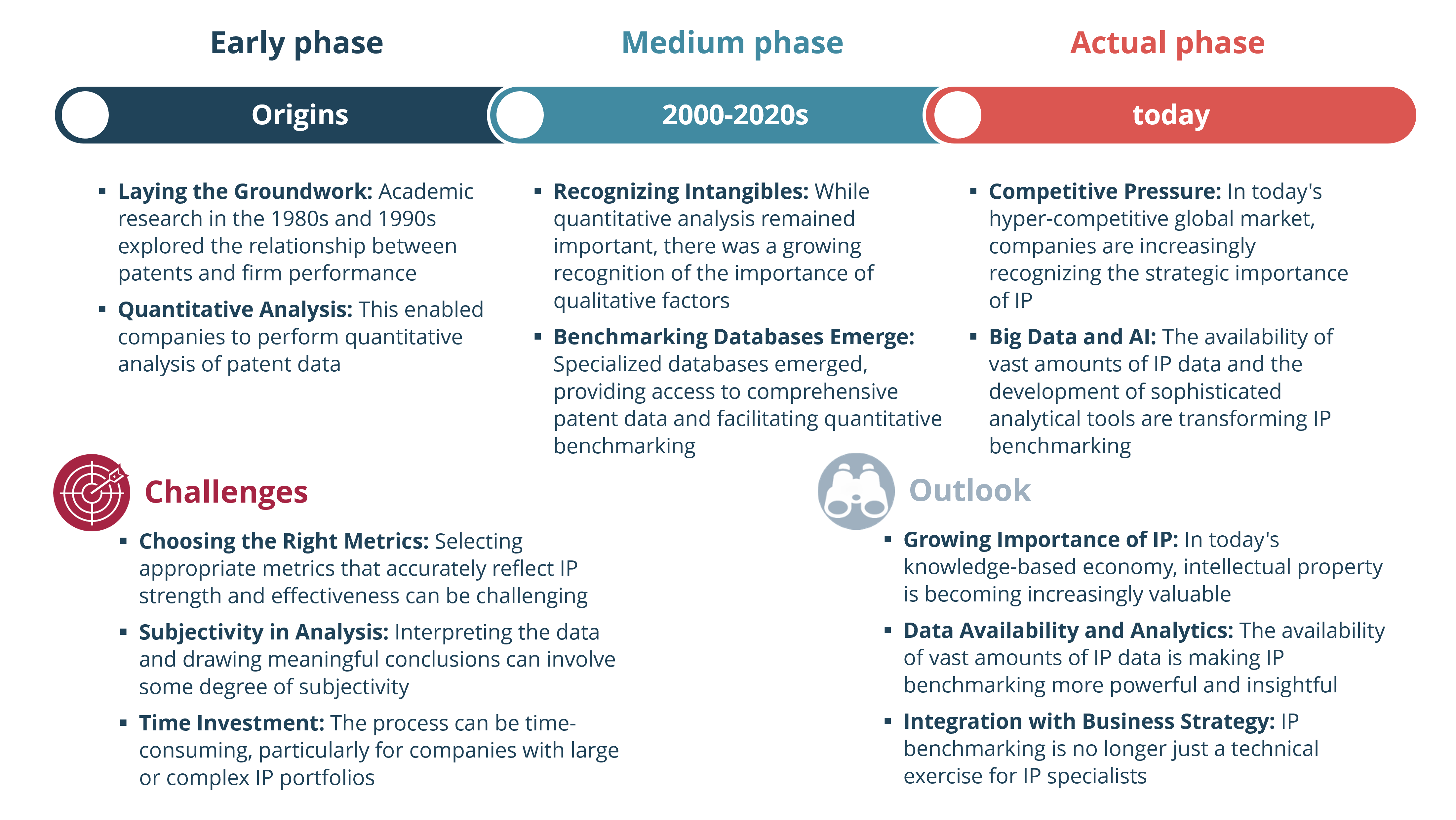IP benchmarking is a process of evaluating a company’s intellectual property👉 Creations of the mind protected by legal rights. (IP) assets and strategies against those of its competitors or industry leaders. This analysis helps companies understand their own IP strengths and weaknesses, make informed strategic decisions, gain competitive intelligence, optimize costs, and maximize the value of their IP portfolio.
IP benchmarking comes in three main flavors. First, portfolio benchmarking compares your IP assets (patents, trademarks, etc.) to those of competitors, analyzing quantity, quality, technology areas, and geographic coverage. Second, cost management benchmarking focuses on optimizing IP budgets by comparing insourcing versus outsourcing costs and identifying cost-saving opportunities. Finally, organizational benchmarking analyzes IP management👉 Strategic and operative handling of IP to maximize value. structures and processes, including the fit between strategy and organization, to identify best practices and improve efficiency. Each type offers valuable insights to better achieve your business goals.
IP benchmarking empowers IP experts to speak the C-suite’s language. By showcasing how a strong IP strategy👉 Approach to manage, protect, and leverage IP assets. drives revenue, market share, and profitability, benchmarking highlights IP’s value in achieving core business goals. It allows to show quantifiable results, like cost savings from pruning low-value patents or revenue gains from licensing👉 Permission to use a right or asset granted by its owner. underutilized IP. With clear visuals and concise language, IP experts can effectively communicate the strategic implications of benchmarking, aligning it with initiatives like new product development and market expansion, ultimately securing C-suite support for IP as a driver of business success.







